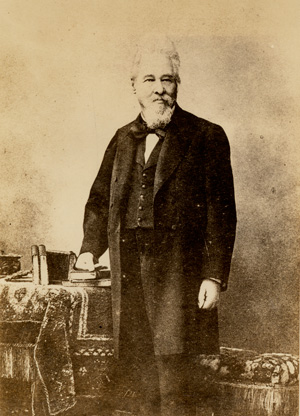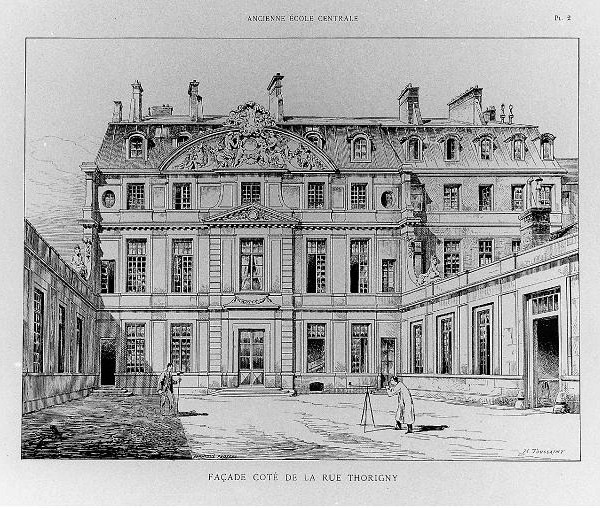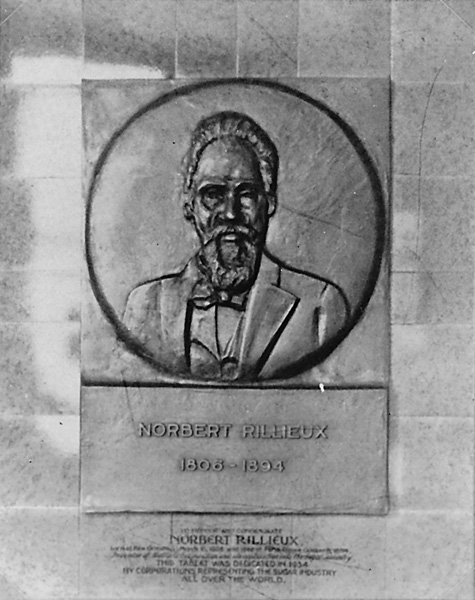
Thursday, October 25th, 2018
Norbert Rillieux - Engineer, Free Man of Color, and Paris Expat
Every time you taste something sweetened with sugar, you should think of Norbert Rillieux.
 Norbert Rillieux
Norbert Rillieux
Source: Royal Society of Chemistry Web site
Collections of the Louisiana State Museum
(Fair Use Claim)
His 1846 invention, the Multiple Effect Evaporator under Vacuum, paved the way for the safer production of cheaper, better quality sugar that required less slave labor to produce. The American Chemical Society describes it as one of the great early innovations in chemical engineering and declared it a National Historic Chemical Landmark in 2002.
The son of Vincent Rillieux, a wealthy white Frenchman, and Constance Vivant, a free woman of color, Norbert was born in New Orleans in 1806. He was the eldest of seven children in his Creole family; Impressionist painter Edgar Degas was his mother's first cousin.
Rillieux showed an interest in engineering at an early age and his father, who was also an engineer, sent him to France to be educated. He enrolled at the École Centrale* in Paris, where he excelled in physics, mechanics and engineering. At the age of 24, he was appointed an Instructor in Applied Mechanics at the school.
 Old Ecole Centrale - Façade rue Thorigny
Old Ecole Centrale - Façade rue Thorigny
Source: OpenEdition.org
(Fair Use Claim)
Rillieux began working on his invention while in France. He returned to New Orleans during the sugar boom of the early 1830s and continued to improve his evaporator. He enjoyed his first commercial success when he sold an evaporator to Theodore Packwood of the Myrtle Grove Plantation refinery near New Orleans. His invention represented a complete change in scientific theory as well as an improvement in the mechanics of sugar production.
Rillieux's device was adopted by sugar manufacturers in Cuba, Mexico, France, and Egypt, as well as in the U.S., and his system (the underlying principles of which are still in use today) became recognized as the best method for lowering the temperature of evaporation across many industries. He became quite wealthy as a result.
Despite this success, Rillieux was forced to endure the increasing indignities and injustices visited upon free blacks in Louisiana during the 1850s. When Louisiana passed a law requiring free persons of color to carry a pass, he returned to France.
He returned to the Ecole Centrale for a time, but then devoted himself to Egyptology and deciphering hieroglyphics. He subsequently took up engineering again and at the age of 75, he patented a new process used in the refining of cane and beet sugar that is still in use today.
Rillieux died in Paris in 1894 at the age of 88. He is buried in Père Lachaise cemetery. Over 30 years after his death, a worldwide movement was begun to honor his contributions to the sugar industry. A bronze plaque showing a bust of Rillieux and bearing an inscription in his honor was created in Amsterdam and transferred to the Louisiana State Museum in New Orleans in 1934.
 Norbert Rillieux Commemorative Plaque
Norbert Rillieux Commemorative Plaque
Image from Louisiana State University Web site
(Fair Use Claim)
To learn more about the original sugar refining process, called the "Jamaica Train," click here.
*The Ecole Centrale was originally located in the Hôtel de Juigné, which is now the Hôtel Salé, home of the Picasso Museum.

 Our Walk: Black History in and around the Luxembourg Garden - Click here to book!
Our Walk: Black History in and around the Luxembourg Garden - Click here to book!